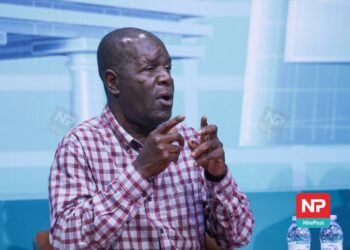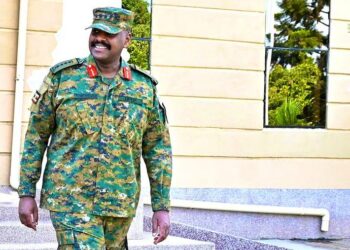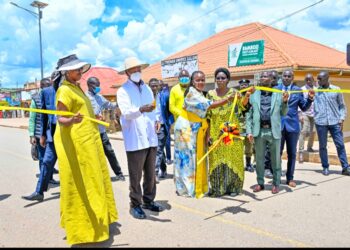After attaining independence from Britain in 1962, Dr Apollo Milton Obote was elected as the executive Prime Minister and Sir Edward Mutesa II as the President. Kabaka Mutesa’s role was largely ceremonial.
The post of the Prime Minister in Uganda was first introduced in 1962 and later abolished in 1966 by Milton Obote. It was, however, reestablished in 1980.
The primary role of the Prime Minister is to chair the Cabinet. The President is, however, the effective head of the government.
Here are the Prime Ministers of Uganda since Independence;
1.Milton Obote
Milton Obote became the first executive Prime Minister following the end of British colonial rule in Uganda. He was born in 1925 and died in 2005 while in exile in South Africa. At early life, he worked in Kenya as a construction worker and was involved in the national independence movement. Upon returning to Uganda, he joined politics and was elected to the Colonial Legislative Council. In early 1964, there was a military mutiny in Jinja city where the soldiers demanded promotions and pay rise which was agreed upon. Dictatorship marred the tenure of Obote, and at one time, he was implicated in a gold smuggling scandal with some of the top military officers.
2. Otema Allimadi
Otema Allimadi was born in 1929 in Kitgum. He died 2001. He also served as foreign minister from 1979 to 1980 and as an ambassador from 1964 to 1971. He became the first Prime Minister of Uganda after the post was re-established in 1980 and served for five years until 1985.
3.Paulo Muwanga
Paulo Muwanga was born in 1921 and died in 1991 in Kampala. He was a member of Ugandan’s People Congress. In 1980, he was at the helm of the electoral commission and the de facto President for a few days until the Presidential Commission of Uganda was formed. He was the chairman of the Commission which held the powers of the President in the country between May and December. After the elections, Milton Obote was declared the President but was ousted by Yoweri Museveni who staged guerrilla warfare. Muwanga later became the Prime Minister in 1985.
4.Abraham Waligo
Waligo was the 4th Prime Minister of Uganda from 25 August 1985 to 26 January 1986. He was born on 28 July, 1928 and died on 6 March, 2000.
5.Samson Kisekka
Immediately after becoming the president of Uganda, Yoweri Museveni appointed Dr. Samson Kisekka to be the Prime Minister of Uganda on 31 January 1986. He served in this position for five years. He was later elevated to the office of the Vice President on 22 January 1991. He also served as a special presidential adviser until his retirement in 1994.
Dr. Kisekka was a model personality and a grand source of inspiration to both young and old. He remained a presidential adviser until his death. He died at a hospital in London, England, on 25 October 1999, while awaiting heart surgery.
6.George Cosmas Adyebo
George Cosmas Adyebo was a politician and economist who was Prime Minister of Uganda from 1991 to 1994. Adyebo became Prime Minister on 22 January 1991, succeeding Samson Kisekka, who became Vice-President. Adyebo served as Prime Minister for nearly four years, until 18 November 1994. Adyebo died on November 19, 2000 at Kampala International Hospital after battling with cancer for several years
7.Kintu Musoke
Kintu Musoke closely associated with President Yoweri Museveni. He served as Prime Minister of Uganda from 18 November 1994 to 5 April 1999. He was later appointed to head a task force on fighting AIDS in Uganda. He also serves as an Advisor to the President of Uganda.
8.Apolo Nsibambi
Apolo Robin Nsibambi was Prime Minister of Uganda from 5 April 1999 until 24 May 2011, when Amama Mbabazi succeeded him.
Nsibambi served as the dean of Faculty of Social Science at Makerere University from 1978 until 1983 and from 1985 until 1987. He was appointed head of the Department of Political Science at Makerere University in 1987, a position he held until 1990. He was Director of the Makerere Institute of Social Research from 1994 to 1996.
Between 1996 and 1998, he served as Minister of Public Service in the Uganda Cabinet. In 1998 he was appointed Minister of Education and Sports, serving in that capacity until 1999 when he was appointed Prime Minister and Leader of Government Business in Parliament.
Nsibambi also served as the chancellor of Makerere University from 2003 until October 2007. He taught at the university in the 1960s, befriending author Paul Theroux, who interviewed Nsibambi in his travelogue Dark Star Safari.
9.Amama Mbabazi
Mbabazi was born in Rukiga in 1949, and as a young man studied law at Makerere University. He worked as a State Attorney in the Ugandan Attorney General Chambers and was later promoted to the post of secretary of Uganda Law Council. He has held several other positions in the government of Uganda, including as the head of the External Security Organization, Minister of State for Defense, Minister of State for Regional Cooperation, and Minister of State for Safety. He was appointed as the Prime Minister in May of 2011 and represented Uganda in many international capacities.
10.Ruhakana Rugunda (Incumbent)
Rugunda was born in 1947 in Kabale, and would become a member of the National Resistance Movement Party. He was a doctor in profession, having Bachelor of medicine, bachelor of surgery and Masters of Science in public health.
His political career started at Makerere University where he was elected as the President of the National Union of Uganda Students.
However, his break into the national politics came after Museveni seized power in 1986. The President appointed Rugunda in several Cabinet posts, which included Minister of Works, Minister of Health, Minister of Information, Minister of Foreign Affairs, Minister for the Presidency, and Minister of the Interior. He was later appointed the Prime Minister in 2014.
Do you have a story in your community or an opinion to share with us: Email us at editorial@watchdoguganda.com











